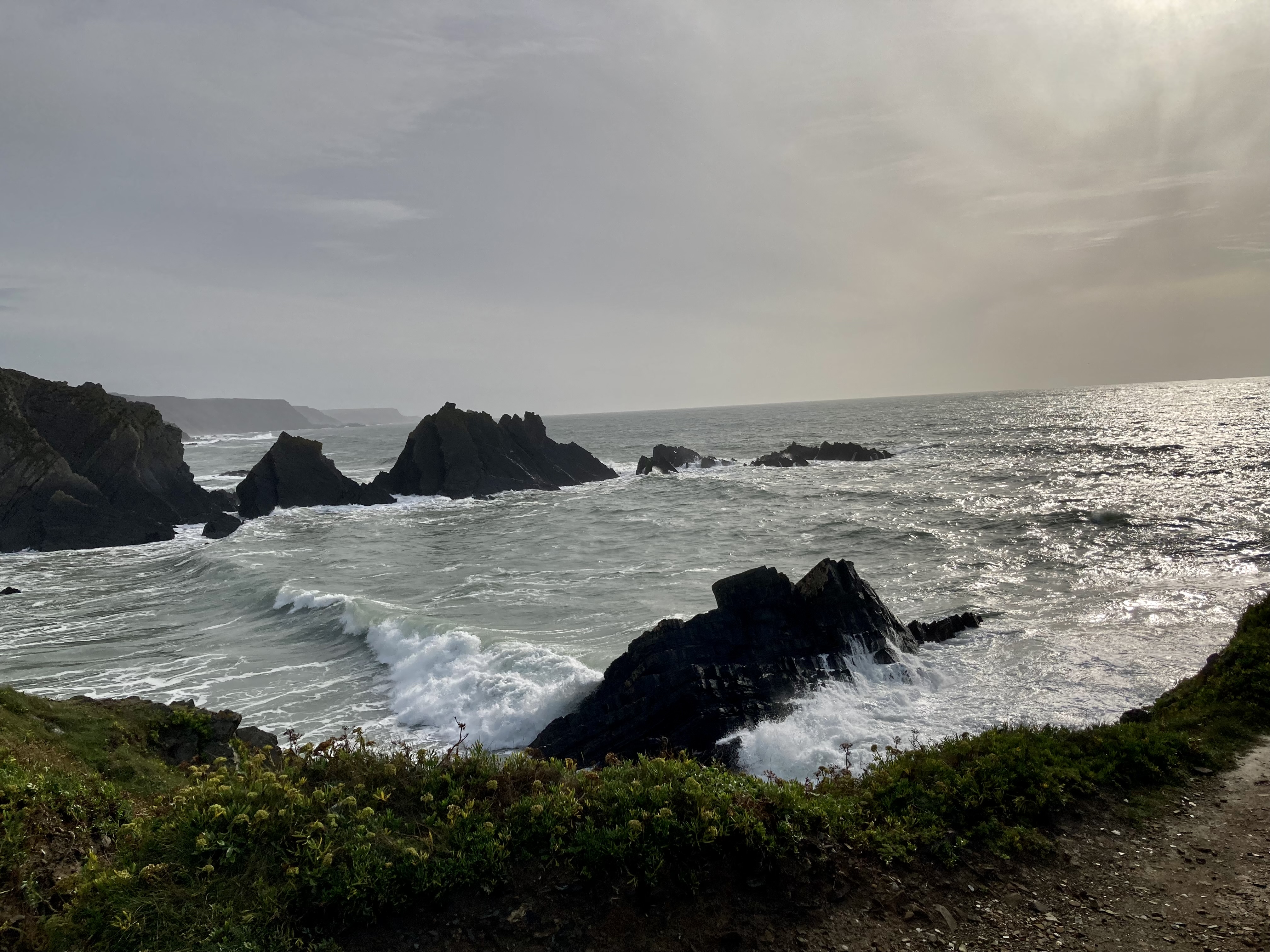
St Nectan, Hartland
I’ve been wanting to visit Hartland for a long time because of the association with St Nectan, the eldest of King Brychan’s children and their impact especially in Cornwall. However, I knew that Nectan had established a significant base at Hartland in Devon and that yearly his siblings would travel up from Cornwall to meet all together. So I was excited and interested to see the journey God would take me on as I visited sites associated with Nectan but in Devon.
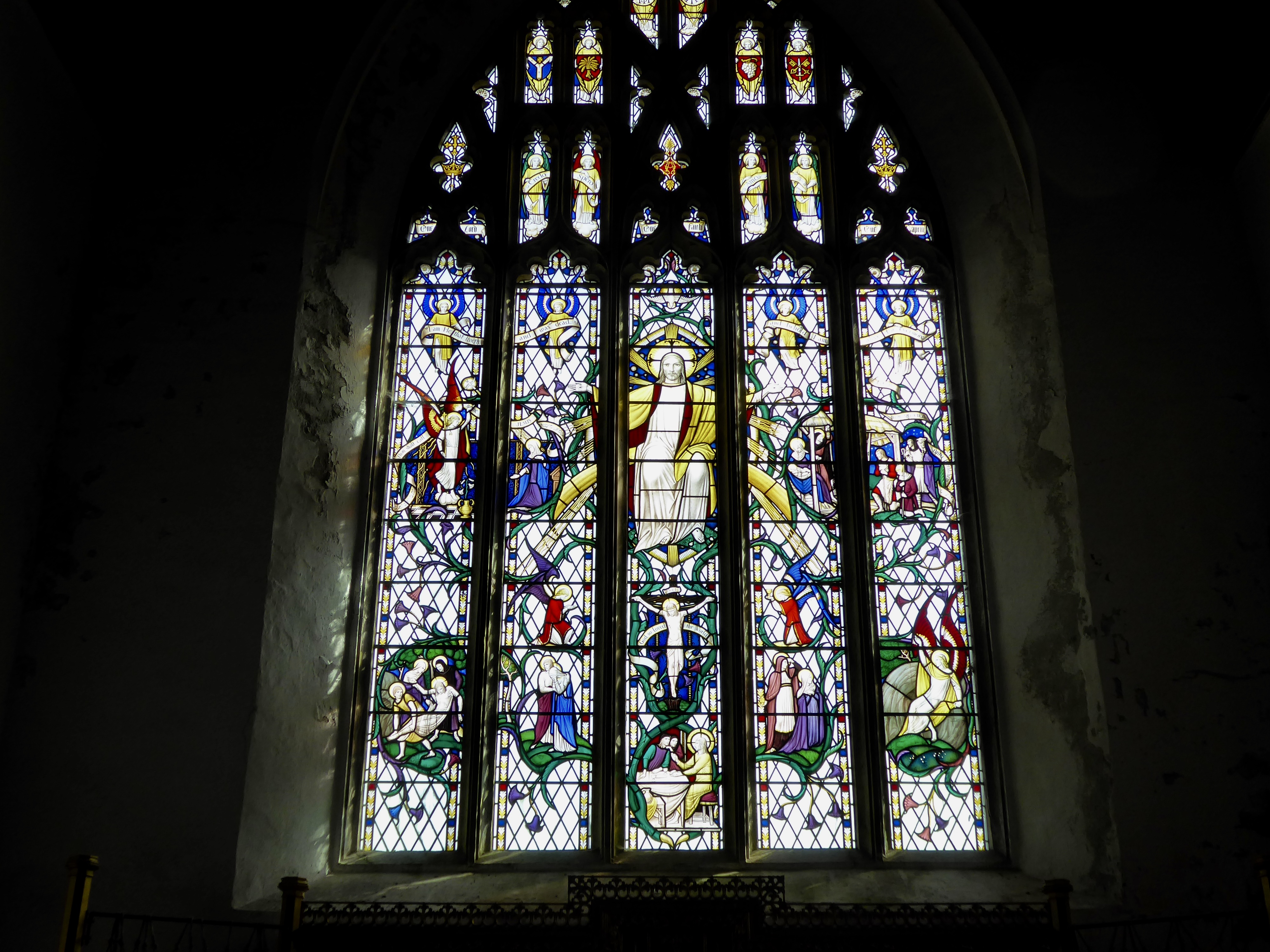
St Nectan’s church and holy well at Hartland were the obvious place to start and I ended up visiting the church on three occasions on successive days. The first day was slightly curtailed as bell ringers were visiting and once the bells started, although a joyful sound, I found it hard to be still and pray.

The church is large, with the tallest tower in Devon. It’s an impressive building in a remote location in the tiny hamlet of Stoke, just inland from the north Devon coast. First impressions looking around the church were that Nectan was still remembered and honoured, although little is mentioned in the write ups. However, he is depicted in the stained glass, the icon, a sculpture and the tomb where once his relics lay is still prominent.
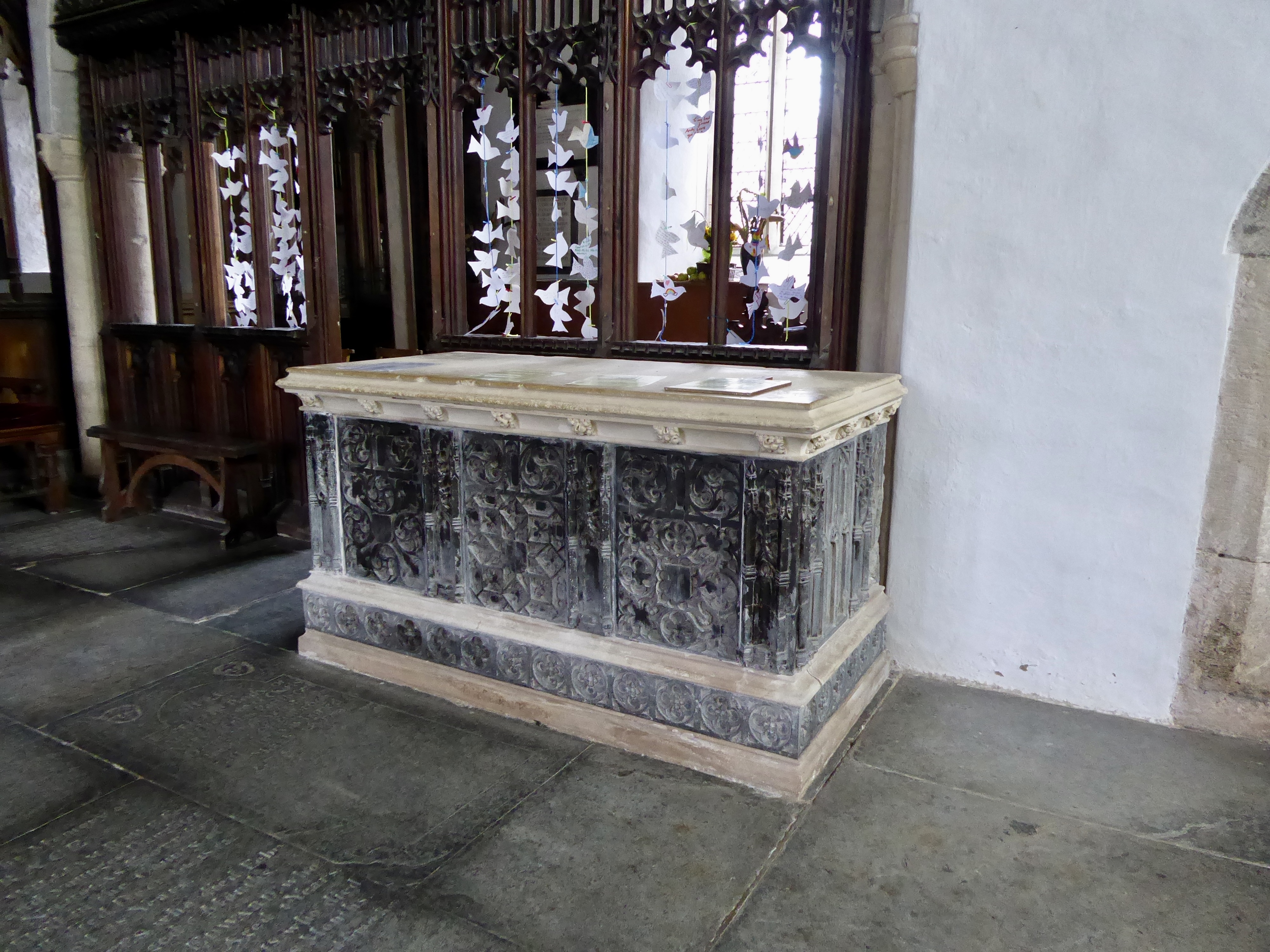
So who was Nectan? It’s said he was the eldest son of King Brychan’s many children, born in 468AD, and that he came as a missionary to the south west to evangelise. By the time he was in Hartland he was living as a hermit, having been influenced by the Egyptian desert father St Anthony. He was living off acorns and herbs. The only time he had company was when his siblings visited just after Christmas, to pray together and thank God. In 510 AD, when Nectan was 42, a local swine herd, Huddon, came across him, whilst looking for his lost pigs. Nectan was able to tell him where they were. in reward Huddon gave him two cows for milk. One day robbers stole the cows and whilst looking for them, Nectan encountered the robbers. They murdered him by beheading him but Nectan picked up his head and headed back to his well and home where he died. Legend has it you can still see blood streaks at his well on the stones. Personally, I didn’t spot them.
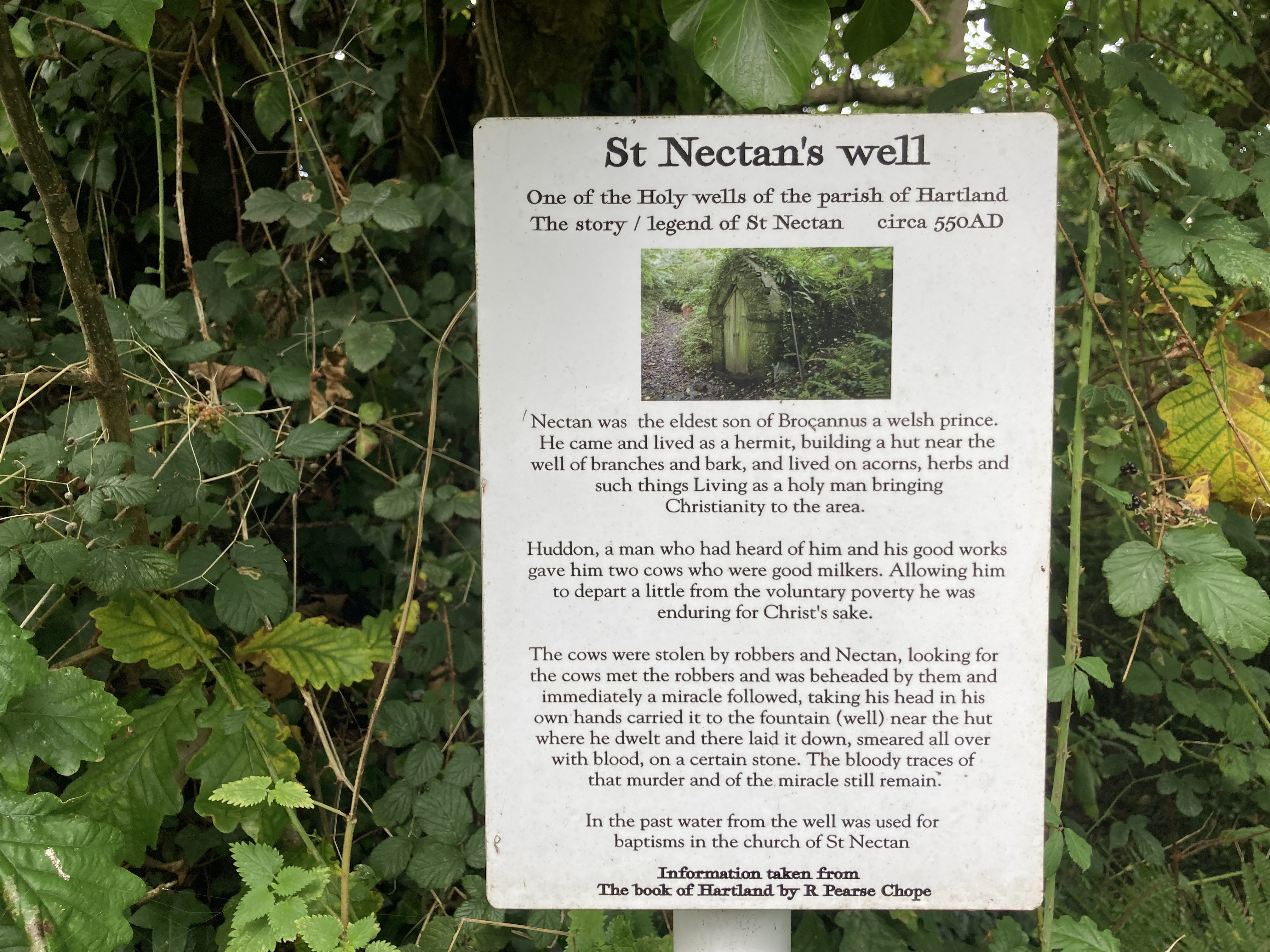
The well must originally have been in a beautiful location deep in the forest at Stoke, sheltered from the fierce prevailing winds and with a fresh water supply. However, when we visited it was a rather dismal experience. Of all the tens of wells I’ve visited this felt probably the saddest and most neglected. It wasn’t just the ruinous state of the well house but the whole atmosphere of the dell where it’s located. My husband and I stayed to pray as is our usual practise at such important places. The bells from the church were ringing joyfully, yet the feel at the well was sombre. Pagan offerings had been left littering the site but even these seemed old. The whole place felt neglected and unloved. Suddenly a grief overwhelmed me, not for the physical place but for the neglect of our Christian heritage, the men and women who have gone before us with such selfless obedience to God. As Christians alive today we have forgotten to honour our forefathers, those who laid down their lives so we could hear the good news of Jesus Christ. I felt like I was sharing something of the heart of God as I prayed. These people were his precious friends.The tears continued with deep repentance and then an urgent interceding for workers to be thrust out into the harvest once more, just as all of Brychan’s children obeyed the call to come share the gospel. At this point sunshine broke through and landed on the roof of the well house and a measure of hope returned with the burden of God’s heart discharged in prayer. The stream is still flowing clear and even though it’s flowing through muck, it is there. God’s river continues to flow in this day and age.
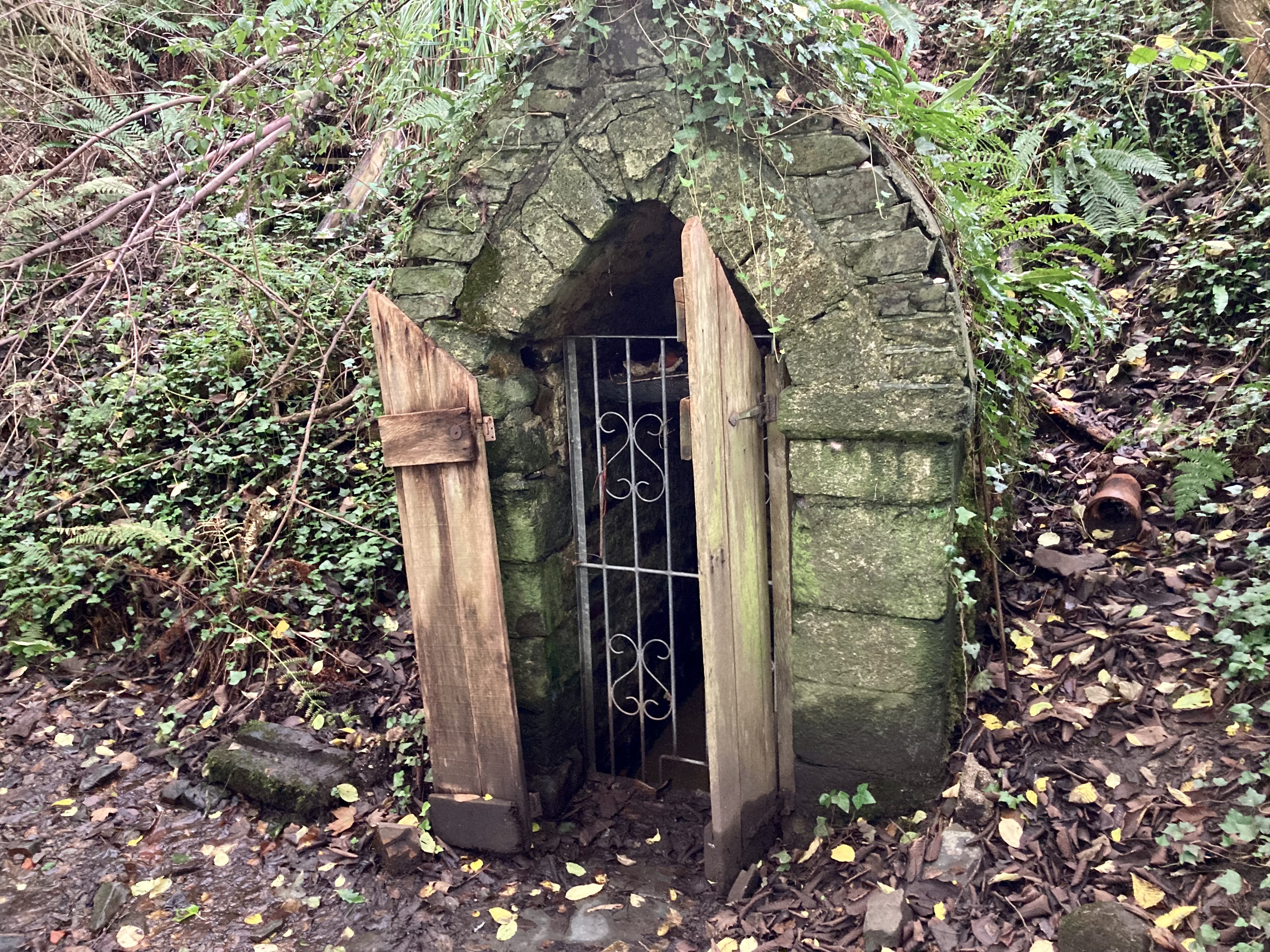
As I prayed in the church in the prayer chapel, I was struck by the creativity of how this area had been set up. There was an icon, a sculpture, a rustic cross from sea wood. A dedicated little table was set aside where you could write and colour prayers on paper doves to then hang with others. Prayer cards were available to lay on the altar. It was a vibrant place of creative prayer. Yet once again I felt tears. I couldn’t concentrate to go deeper because of the bell ringing so waited for another day when the church was empty.
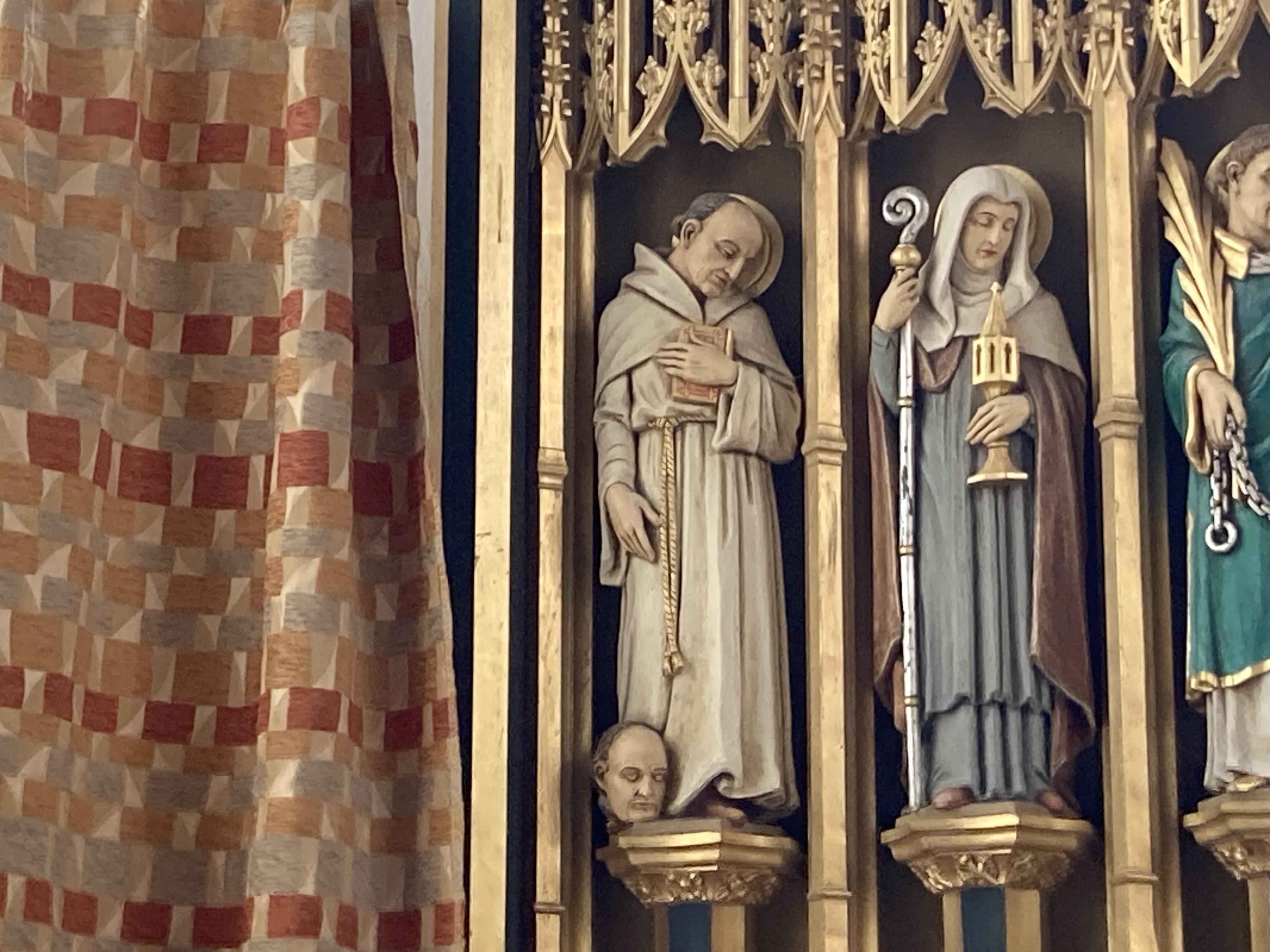
On the second visit the church was still and empty. The presence of God permeated. I knelt at the main altar with Nectan’s tomb behind me on the left. The stained glass window beautifully magnifies Jesus as the risen Lord. I was swept up in adoration of His majesty and the awesomeness of who He is. My soul was worshipping freely. There was such a sense of coming home to the heart of God and being welcomed. I went lower, lying prostrate for a while of the stone floor before the altar. It felt the only response to make to the majesty of Almighty God and I willingly wanted to humble myself in His presence. There was no striking vision or encounter but a gentle sense of an angel in front of me.
My heart continued in prayer as I ask for the courage to be bold like Nectan in the sharing of my faith in Jesus Christ. This felt like a divine appointment rather than a mission. Often when I visit these places there’s something God asks of me, a mission. That wasn’t the case here. It was about me and God, intimately.
On our third visit to the church in Hartland the organist was playing for a while. It filled the church with reverent music and I knelt once more in the prayer chapel. I felt deep rest in my spirit and was impacted by the presence of God’s peace, holiness and rest. There was no need for words. We were together, spirit to Spirit.

After leaving the church we decided to go to Hartland Abbey close by in the valley, as this was where Nectan’s relics were kept for a long time and it was called St Nectan’s Abbey so we wanted to check if there was any importance in this. The abbey was late medieval and continued until the dissolution of the monasteries under Henry VIII. I discovered no real connection to Nectan and certainly no sense of God’s presence there. It’s probable he wasn’t connected personally with the land.
We took the opportunity to walk down to the coast at Blackpool Beach from Hartland Abbey and the nearest coastland to the church, other than Hartland Quay. The valley walk is sheltered between hedges and in the soft gentleness of a wooded and fielded valley. However, once you hit the coast the shelter completely disappears and you are exposed to the full force of the south westerlies. The coastline is jarred and ragged with frightful cliffs and rock spurs. Surf crashes relentlessly onto the black rocks and even on a quiet day it was a fearsome place. It’s exactly the kind of place the Celtic Christians chose to live near. They considered these ‘edge of the world’ places ‘thin places’ where you could be nearer to God. There was a certain atmospheric fascination to the hostility of this coastline.
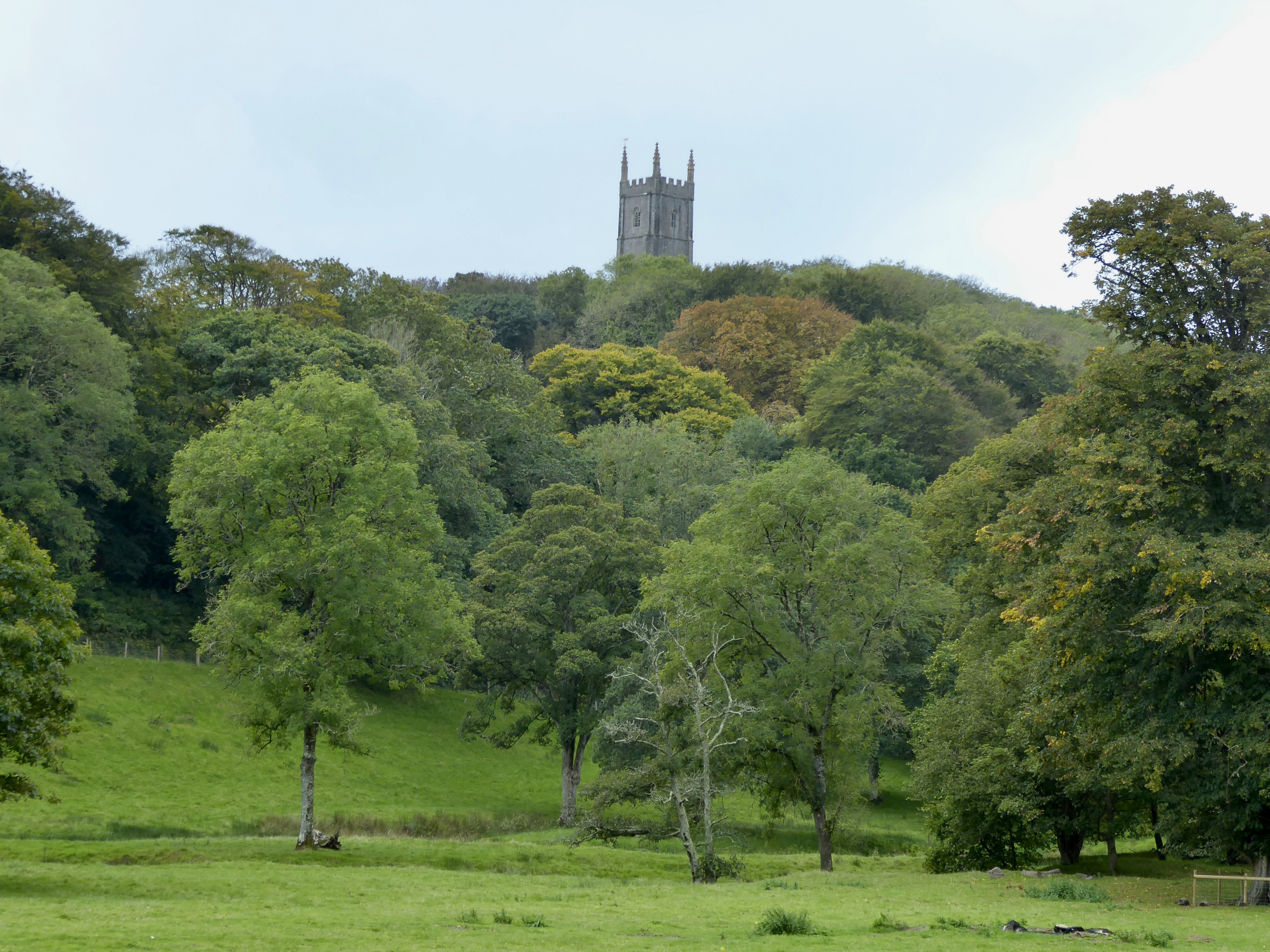
Rev Robert Stephen Hawker who became vicar of Morwenstow for 40 years, was curate here and wrote this poem. It was inspired by a small room up a steep stairway nestled in the church. He thought it the prayer cell of a monk who lived there.
THE CELL BY THE SEA
How wildly sweet by Hartland Tower,
The thrilling voice of prayer:
A seraph, from his cloudy bower,
Might lean to listen there.
For time, and place, and storied days,
To that great fane have given
Hues that might win an angel’s gaze,
‘Mid scenery of heaven.
Above — the ocean breezes sweep,
With footsteps firm and free:
Around — the mountains guard the deep,
Beneath — the wide, wide sea.
Enter! the arching roofs expand,
Like vessels on the shore;
Inverted, when the fisher-band
Might tread their planks no more;
But reared on high in that stern form,
Lest faithless hearts forget
The men that braved the ancient storm,
And hauled the early net.
The tracery of a quaint old time
Still weaves the chancel screen:
And tombs, with many a broken rhyme,
Suit well this simple scene.
A Saxon font, with baptism bright,
The womb of mystic birth,
An altar, where, in angels’ sight,
Their Lord descends to earth.
Here glides the spirit of the psalm,
Here breathes the soul of prayer:
The awful church — so hushed — so calm —
Ah! surely God is there.
And lives no legend on the wall?
No theme of former men?
A shape to rise at fancy’s call,
And sink in graves again?
Yes! there, through yonder portal stone,
With whisper’d words they tell,
How once the monk, with name unknown,
Prepared that silent cell.
He came with griefs that shunned the light,
With vows long breathed in vain:
Those arches heard, at dead of night,
The lash, the shriek, the pain;
The prayer that rose and fell in tears,
The sob, the bursting sigh:
Till woke, with agony of years,
The exceeding bitter cry.
This lasted long — as life will wear,
E’en though in anguish nurs’d —
Few think what human hearts can bear
Before their sinews burst.
It lasted long — but not for aye:
The hour of freedom came:
In that dim niche the stranger lay
A cold and silent frame.
What sorrows shook the strong man’s soul,
What guilt was rankling there,
We know not: time may not unroll
The page of his despair.
He sleeps in yonder nameless ground,
A cross hath marked the stone;
Pray ye, his soul in death hath found
The peace to life unknown.
And if ye mourn that man of tears,
Take heed, lest ye too fall;
A day may mar the rest, that years
Shall seek but not recall.
Nor think that deserts soothe despair,
Or shame in cells is screen’d;
For Thought, the demon, will be there,
And Memory, the fiend.
Then waft, ye winds, this tale of fear,
Breathe it in hall and bower.
Till reckless hearts grow hushed to hear,
The Monk of Hartland Tower.
[Printed in Ecclesia, 1840, in Echoes From Old Cornwall, The Cornish Ballads, etc.]
